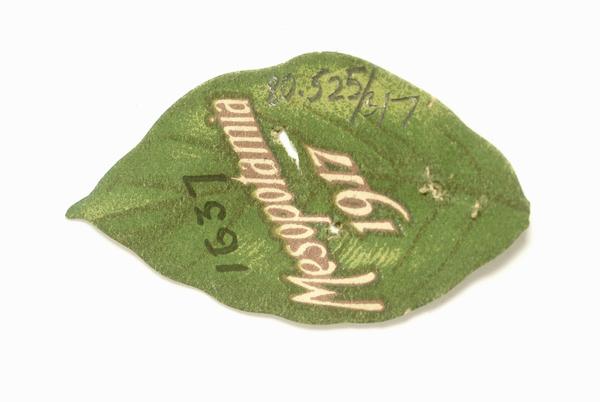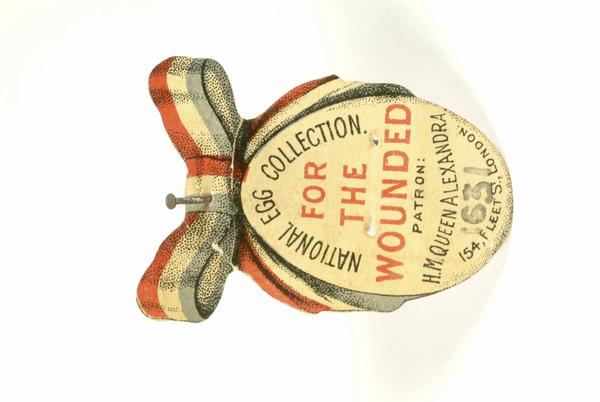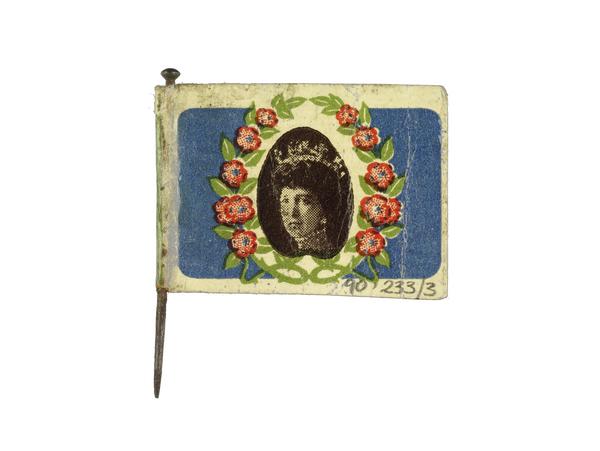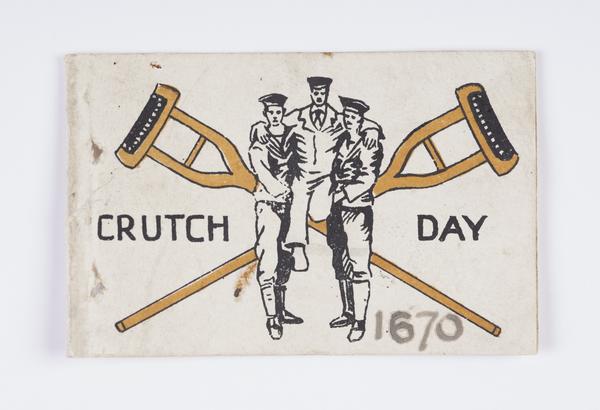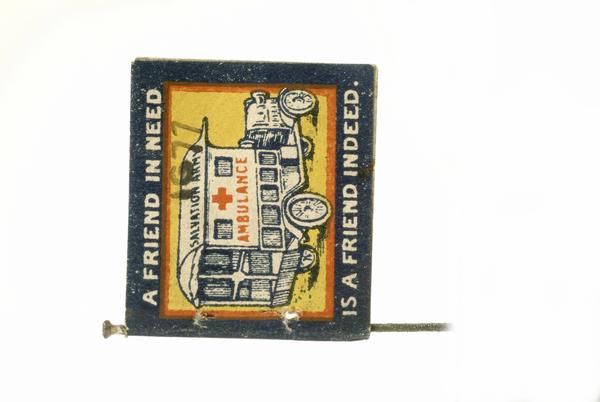What were ‘flag days’ in the First World War?
Fundraisers were a firm fixture on London’s streets during the First World War (1914–1918). On ‘flag days’, charity workers raised money selling little flags, pins and badges that could be attached to clothing. Every one of these emblems tells a story of the various causes Londoners supported during the war.
Across London
1914–1918

Street fundraising was nothing new
Street collectors raised cash for injured soldiers during the Anglo-Boer Wars (1880–1902), for example. But back then, street fundraising was unregulated and some collectors kept a portion of the earnings. In 1903, a new act of parliament made it law to have a licence to collect for charity. It also gave the Metropolitan Police powers to control where and how Londoners could fundraise. Some collectors were even charged with begging.

A pre-war flag day
This pink linen rose was bought on Alexandra Rose Day, a yearly fundraising event launched by Queen Alexandra, King Edward VII’s wife, in 1912. Around 10,000 of these roses were made to raise money for London hospitals. During the First World War, Alexandra Rose Day remained a major event in the capital’s summer calendar. Today, the charity is known as the Alexandra Rose Charity, and it continues to support low-income families in London.

Flag days during the First World War
Street collecting increased dramatically during the First World War, peaking before military service became compulsory in 1916. Volunteers, often women and young girls, could be found all over the city holding their collecting tin and tray of emblems. Flags were typically made with paper, but also with materials like tin, silk and wool. They were quick to produce and sold for as cheap as a penny.

Flag days raised money for many charities
Nearly 18,000 new charities were founded in the UK during the war. They raised money for various causes, including supporting British troops, refugees and prisoners of war. This flag was bought on Crutch Day on 25 April 1918, and raised funds for a Westminster-based charity which organised outings for wounded soldiers.

The impact of flag days
Flag days were appealing as you’d get a little something back in return for your donation. Londoners attached the pins and badges to their clothes to show their support for various causes, just like people do today with red poppies on Remembrance Day. Flag day sales generated a significant amount of money. They were also a visual reminder of the large number of casualties and deaths among those fighting on the front line.

There was competition between organisations
The 18,000 new charities competed with the 37,000 charities that existed in Britain before 1914. By formally giving a charity a specific flag day for fundraising, all organisations had the opportunity to benefit from street collecting. This emblem was for the British Red Cross, founded in 1870, which remained the largest charity operating during the war. Around 10,000 Londoners fundraised for their first Our Day in October 1915.

YMCA Hut Day
This paper emblem is in the shape of the Young Men’s Christian Association (YMCA) logo. Both the YMCA and the Church Army raised money to set up huts in military bases in Britain and on the front line which provided soldiers with food, drink and free paper.

National egg collection
This flag was sold to raise money for the National Egg Collection fund, which encouraged people to donate eggs to military hospitals. But few Londoners kept chickens, so the charity sold flags like this to raise money to buy more eggs. The charity was popular with children, who often wrote their names and addresses on the eggshells in the hope of getting a letter back from the soldiers.

